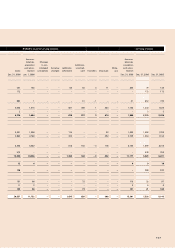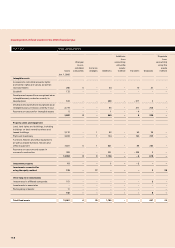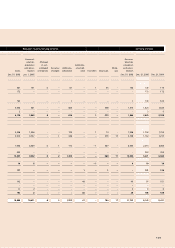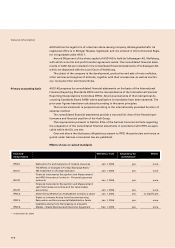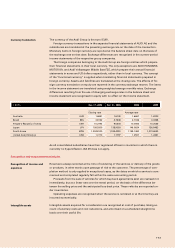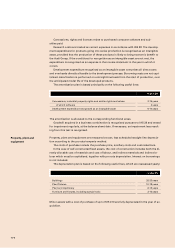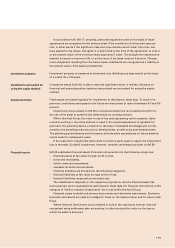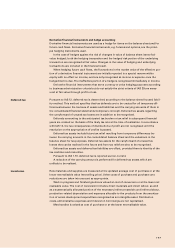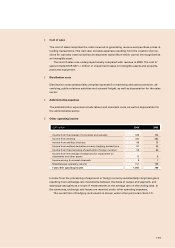Audi 2006 Annual Report Download - page 178
Download and view the complete annual report
Please find page 178 of the 2006 Audi annual report below. You can navigate through the pages in the report by either clicking on the pages listed below, or by using the keyword search tool below to find specific information within the annual report.
1 7 6
Where hedging instruments that serve currency or price hedging purposes according to
business administration criteria do not satisfy the special eligibility requirements of IAS 39
in full, they are classified as “financial instruments at fair value through profit or loss”.
Financial instruments are reported at amortised cost (using the effective interest
method) or at fair value. They are derecognised if the rights to payments from the invest-
ment have expired or been transferred and the Audi Group has in essence transferred all
risks and opportunities associated with their title.
The amortised cost of a financial asset or financial liability, using the effective interest
method, is the amount at which the financial asset or liability was measured at initial recog-
nition minus principal repayments and any impairment losses. Receivables and liabilities
denominated in foreign currencies are measured at the middle rate on the balance sheet
date. In the case of liabilities, amortised costs always correspond to the nominal or settle-
ment value.
The fair value generally corresponds to the market value or quoted market price. If no ac-
tive market exists, the fair value is determined by means of investment mathematics meth-
ods. These comprise references to recently completed transactions between independent
business partners, the use of the current market prices of other assets that are essentially
similar to the asset in question, discounted cash flow methods, and option pricing models
that take account of the specific circumstances of the issuer.
It is assessed at each balance sheet date whether there is any objective basis for impair-
ment of a financial asset or group of financial assets.
Primary financial instruments
Investments in subsidiaries excluded from consolidation and participating interests are
generally shown at their respective cost of purchase, as no active market exists for these
companies and no fair value can reliably be determined with a justifiable amount of effort.
Loans and receivables originated by the enterprise, as well as liabilities, are measured at
amortised cost. These include in particular
– loans advanced,
– trade receivables and payables,
– other current assets and liabilities.
In the case of current items, the fair values to be indicated additionally in the Notes cor-
respond to the amortised cost. For non-current assets and liabilities with more than one
year to maturity, fair values are determined by discounting future cash flows at market
rates.
Liabilities from financial lease agreements are carried at the present value of the leasing
instalments.
Available-for-sale financial assets are always measured at their fair value. In the case of
quoted financial instruments – within the Audi Group, these comprise exclusively securities
– the fair value corresponds to the market value on the balance sheet date. The fluctuations
in value of available-for-sale securities are accounted for within a separate equity reserve
with no effect on income, after taking account of deferred tax. Unless there is evidence of
lasting impairment, the financial result includes only gains or losses realised from sales.
However, if there is evidence of a lasting fall in the value of securities, the accumulated loss
is booked against the equity reserve and recognised in the income statement; once impair-
ment losses have been included in the income statement, they are no longer reversed by
recognition in the income statement. In the 2006 financial year – as in previous years – there
was no evidence of lasting impairment of the securities portfolio.



